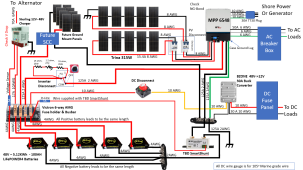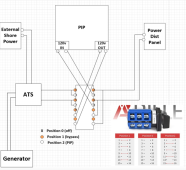FilterGuy
Solar Engineering Consultant - EG4 and Consumers
Hi folks,
I designed this system for someone and I thought I would put it here for others to comment on and/or use. (It is intended to go on a full-sized Schoolie)

One aspect to be aware of is that the DC loads have no low voltage disconnect. The only line of defense is the BMS in the batteries.
The solar panels are a bit underpowered for the size of the system, but it is all that can fit in the available space.
I designed this system for someone and I thought I would put it here for others to comment on and/or use. (It is intended to go on a full-sized Schoolie)

One aspect to be aware of is that the DC loads have no low voltage disconnect. The only line of defense is the BMS in the batteries.
The solar panels are a bit underpowered for the size of the system, but it is all that can fit in the available space.



